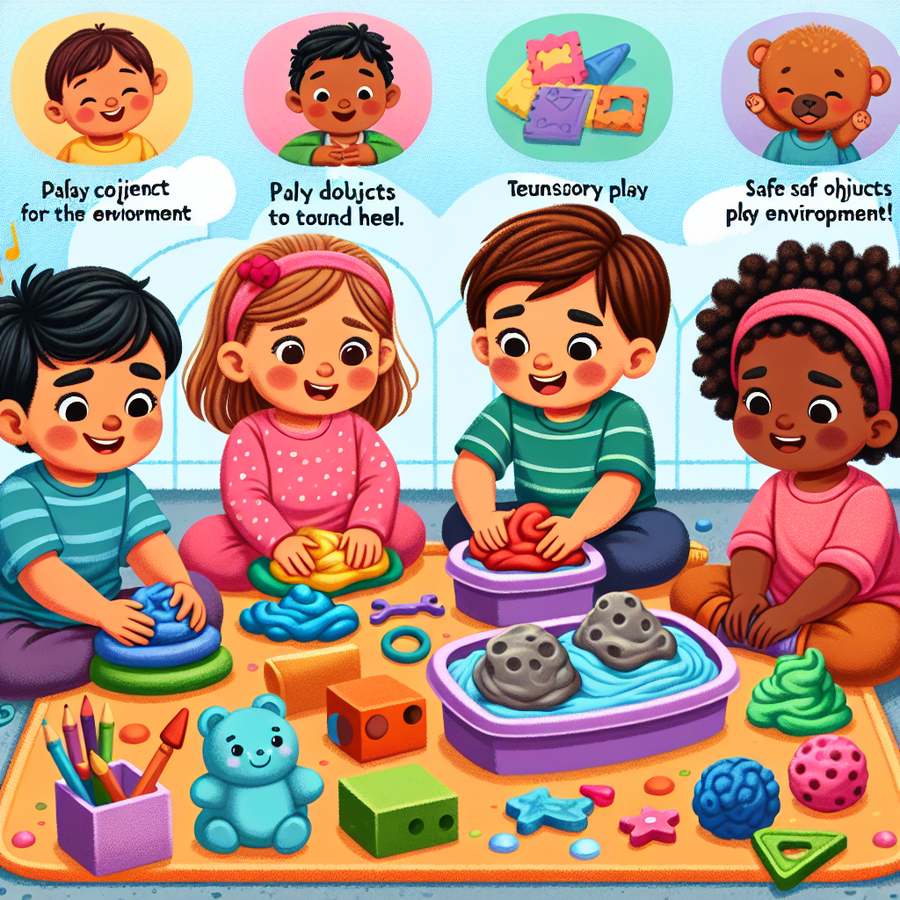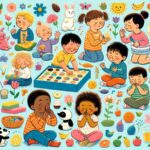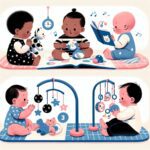When we talk about Baby sensory play for development, we’re diving into a world of colors, sounds, textures, and experiences that not only captivate our little ones but significantly contribute to their developmental milestones. I remember the first time I introduced my baby to sensory play; the joy in her eyes was unmistakable. It was a simple setup – a bowl of water with floating toys. Yet, the impact was profound, laying the foundation for countless learning opportunities.
Why Is Baby Sensory Play Crucial for Development?
Baby sensory play isn’t just about keeping our little ones occupied. It’s a fundamental aspect of their growth, touching on cognitive, social, emotional, physical, and language development. From the gentle touch of a feather on their skin to the vibrant colors of a rainbow stacker, these experiences stimulate the brain, fostering neural connections that are pivotal in early childhood.
For instance, The Importance of Sensory Play for Newborn Development highlights how sensory play supports cognitive growth and fine motor skills from a very young age. It’s about creating an environment where babies and toddlers can explore and learn at their own pace, ensuring a solid foundation for future skills.
How Can Parents Facilitate Baby Sensory Play at Home?
Facilitating baby sensory play at home is simpler than you might think. It doesn’t require expensive toys or complex setups. Instead, focus on everyday items and activities that stimulate your baby’s senses. For example, a DIY sensory board with different textures—soft, rough, sticky—can provide hours of exploration.
Integrating music into your baby’s daily routine, as discussed in Integrating Music into Your Baby’s Daily Routine for Cognitive Benefits, is another excellent way to stimulate auditory development. The varying sounds, rhythms, and melodies enhance cognitive skills, including memory and attention span.
What Are the Best Baby Sensory Play Activities for Development?
Choosing the best baby sensory play activities often depends on your child’s interests and developmental stage. However, some all-time favorites include water play, textured balls for tactile exploration, and colorful light projectors to captivate their visual senses. Remember, the goal is to offer a variety of sensory experiences.
Activities like those mentioned in Activities to Promote Gross Motor Skills in 6-Month-Olds are also fantastic for incorporating gross motor skill development into sensory play. These activities not only stimulate the senses but also encourage movement, supporting physical development.
How Does Baby Sensory Play Support Emotional and Social Development?
Baby sensory play goes beyond just cognitive and physical development; it plays a significant role in emotional and social growth. Engaging in play that involves sharing, turn-taking, and even independent exploration fosters self-confidence, empathy, and understanding of social cues from a tender age.
By incorporating strategies from How to Encourage Independence in Toddlers While Ensuring Safety, parents can create a safe environment for their children to explore sensory play independently. This autonomy supports emotional development and self-discovery.
In conclusion, baby sensory play for development is an essential element of early childhood education. It’s not just about fun and games; it’s about building the foundation for a lifetime of learning. As parents, we have the privilege and responsibility to provide these enriching experiences, fostering our children’s growth in every possible way. Remember, the key is diversity in play, patience, and, most importantly, joining in the fun! Let’s make every moment a learning opportunity.













